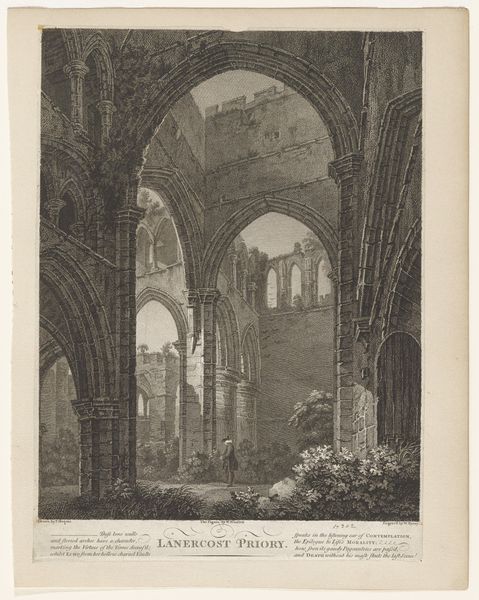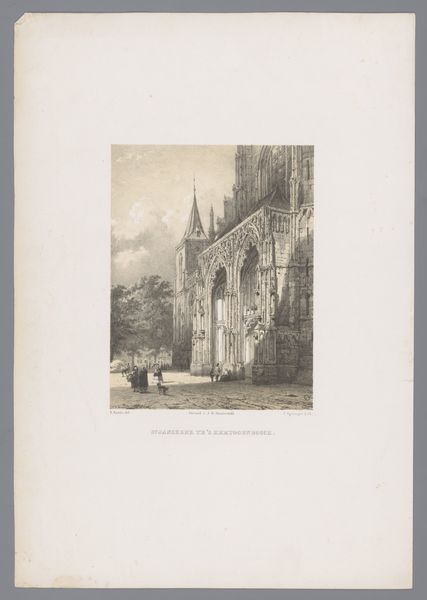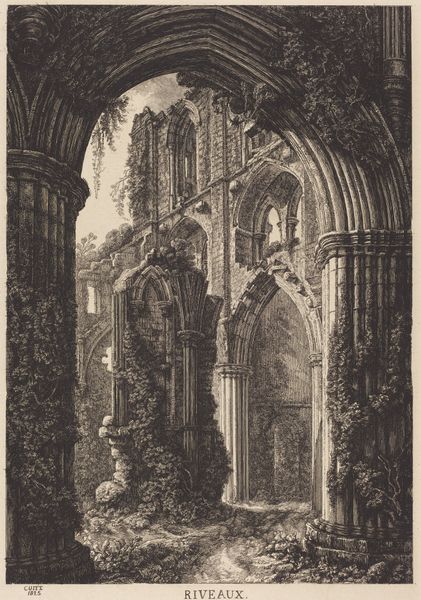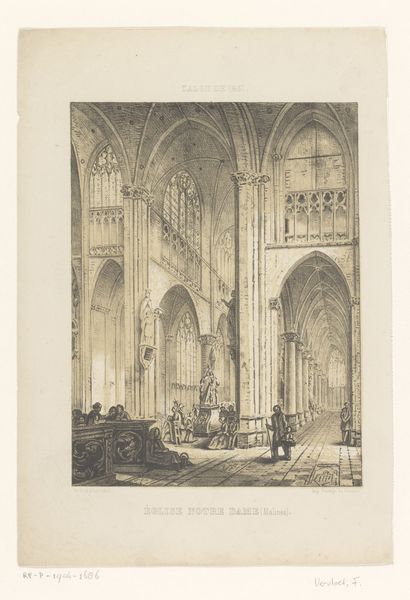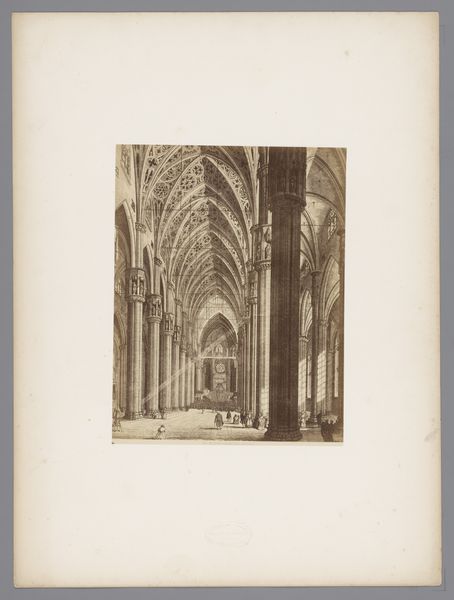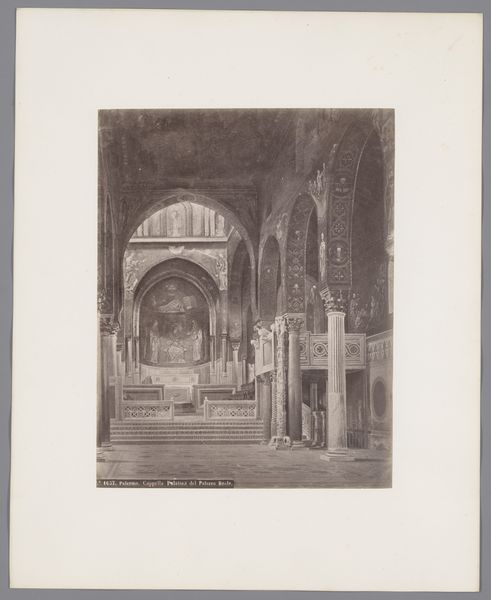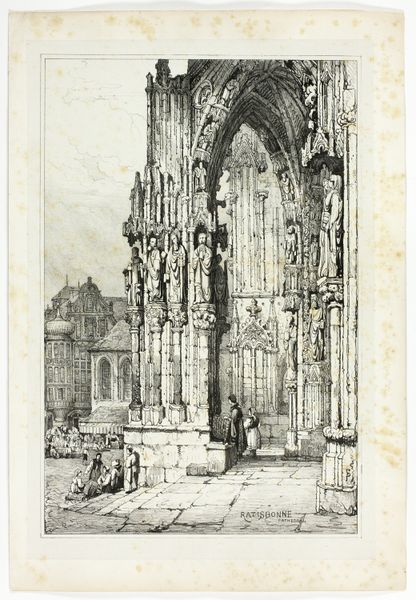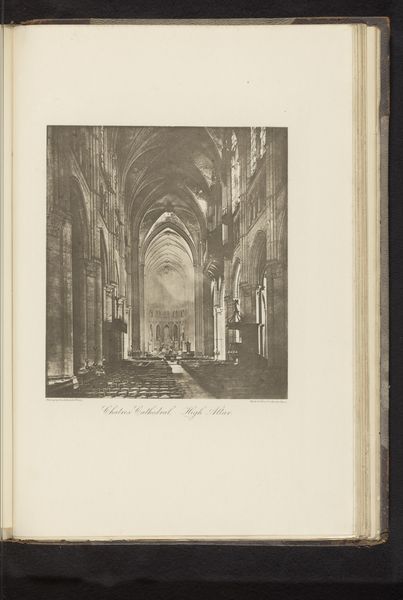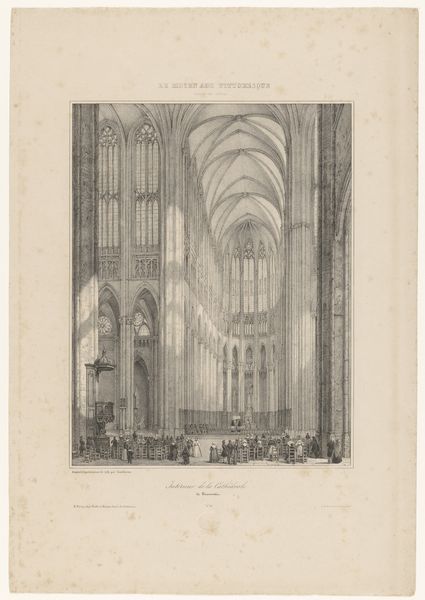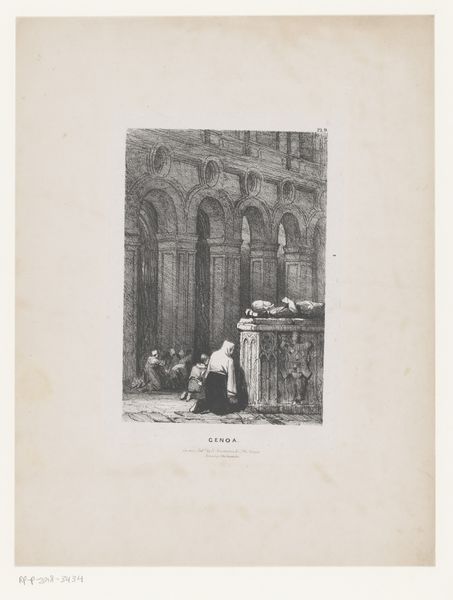
drawing, print, ink, engraving
#
drawing
# print
#
old engraving style
#
landscape
#
ink
#
romanticism
#
cityscape
#
engraving
Dimensions: height 250 mm, width 162 mm
Copyright: Rijks Museum: Open Domain
Editor: So, this is "A Draftsman Working in a Dilapidated Church," dating from sometime between 1799 and 1834. It's an engraving, made with ink, housed here at the Rijksmuseum. I'm immediately struck by the contrast between the intricacy of the architectural ruins and the solitary figure drawing them. What compositional elements stand out to you? Curator: The tension inherent in the pictorial space is quite compelling. Note how the artist employs a sophisticated interplay of light and shadow, particularly the way it articulates the dilapidated structure. The ruined arches and fractured columns draw the eye upwards, emphasizing the verticality, while the artist at work grounds the composition, creating a stable horizontal base. It’s a sophisticated balancing act. Editor: I see that now. The deep shadows really give it a sense of depth and decay. Do you think the sharp contrasts contribute to any meaning here? Curator: Indeed. The sharp contrast delineates form, undoubtedly, but further emphasizes a stark geometry, a spatial logic. Observe how the artist masterfully uses line and texture to distinguish the various surfaces – the smooth, relatively untouched stone from the rough, broken segments, to articulate the historical decay with acute compositional clarity. Editor: It’s amazing how much detail is packed into a monochrome print. Now I’m looking at all the different textures, and how the lines define the space! I wouldn’t have seen that at first glance. Curator: Precisely! The beauty of form lies in its intricacies. Hopefully, a fresh consideration of its material presence enhances our understanding of the artwork.
Comments
No comments
Be the first to comment and join the conversation on the ultimate creative platform.
